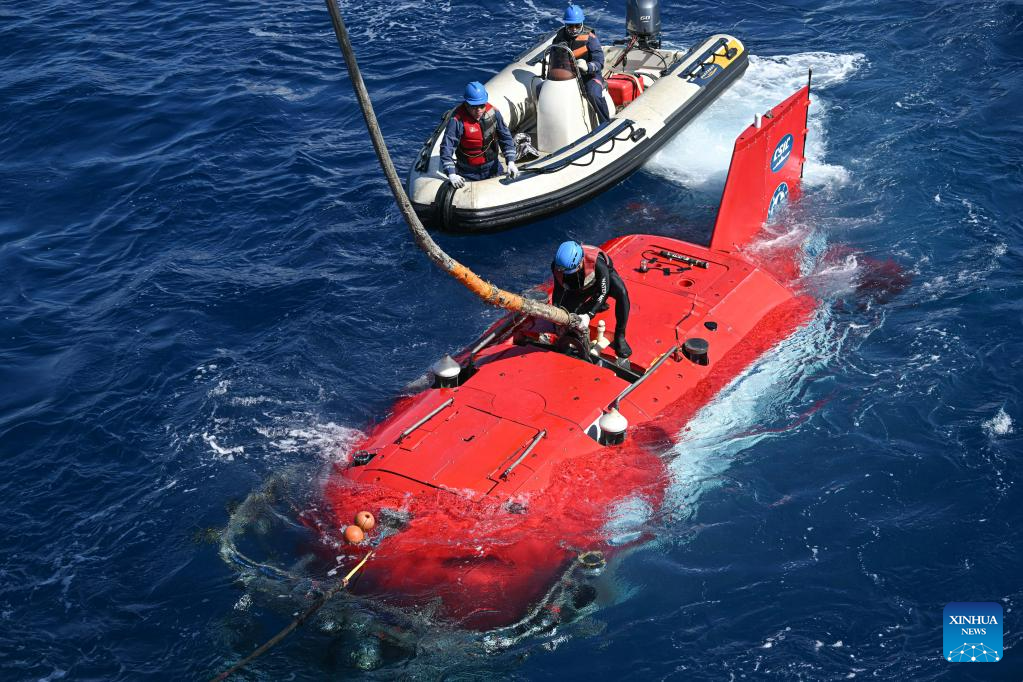
A hydronaut unhitches the rope on the crewed submersible Shenhai Yongshi (Deep Sea Warrior) from the scientific research ship Tansuo-1 to make preparations for underwater investigation in the South China Sea, May 26, 2023. (Xinhua/Pu Xiaoxu)
HAIKOU, May 31 (Xinhua) -- An iron anchor and a box have been discovered near one of the two South China Sea ancient shipwrecks where a Chinese archaeological investigation is ongoing.
Approved by the National Cultural Heritage Administration, a deep-sea archaeological team is conducting the first stage of investigations at the site of the No. 1 and No. 2 shipwrecks near the northwest continental slope of the South China Sea. The investigation will run from late May to early June this year.
The iron anchor and the box were discovered in the southwestern direction of the No. 1 shipwreck site, with a distance of about 50 meters between them.
The lower part of the iron anchor is in a semi-buried state, with two anchor claws exposed, and there is an iron ring at the top of the cylindrical anchor rod.
Preliminary measurements show that the iron anchor is about 1 meter long. The diameter of the anchor rod ranges from 0.1 meters to 0.15 meters, and the diameter of the iron ring at the top is about 0.2 meters.
Further research is required to determine whether this iron anchor belongs to the No.1 shipwreck. The box is preliminarily judged to be made of wood and in a semi-buried state, and the contents of it require further investigation.
The No. 1 and No. 2 shipwrecks, near the northwest continental slope of the South China Sea, were discovered in October 2022.
The relatively well-preserved shipwrecks contain a large number of cultural relics, clearly belong to a specific era, and possess important historical, scientific, and artistic value. The shipwreck discovery is not only a major breakthrough in China's deep-sea archaeology, but also a significant archaeological discovery on a global level. ■
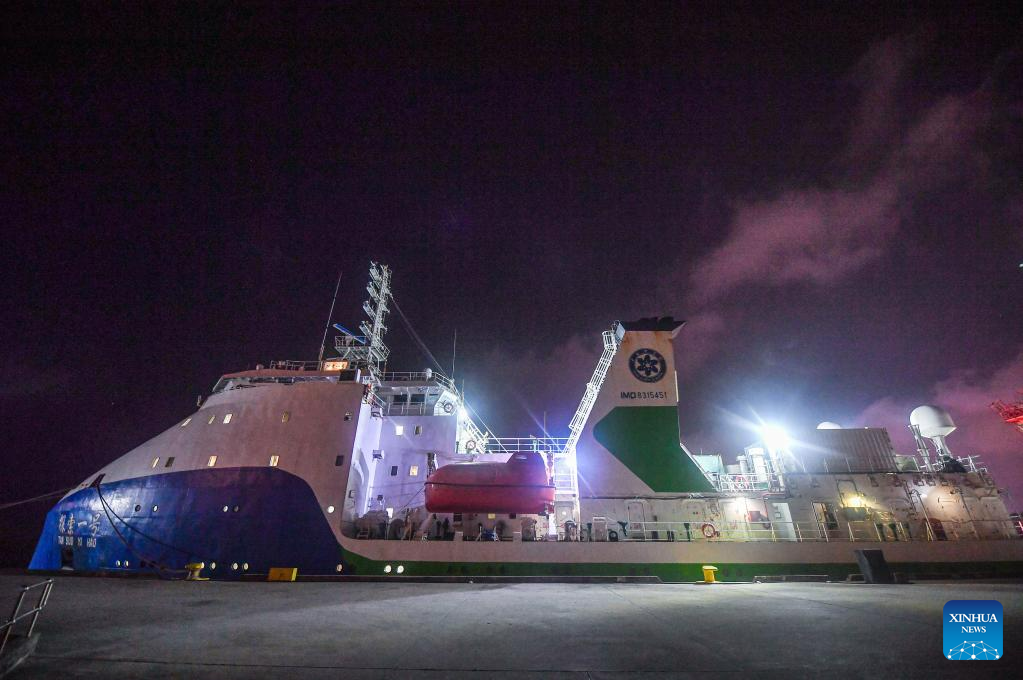
This photo taken on May 22, 2023 shows China's scientific research ship Tansuo-1 in Sanya, south China's Hainan Province. (Xinhua/Pu Xiaoxu)
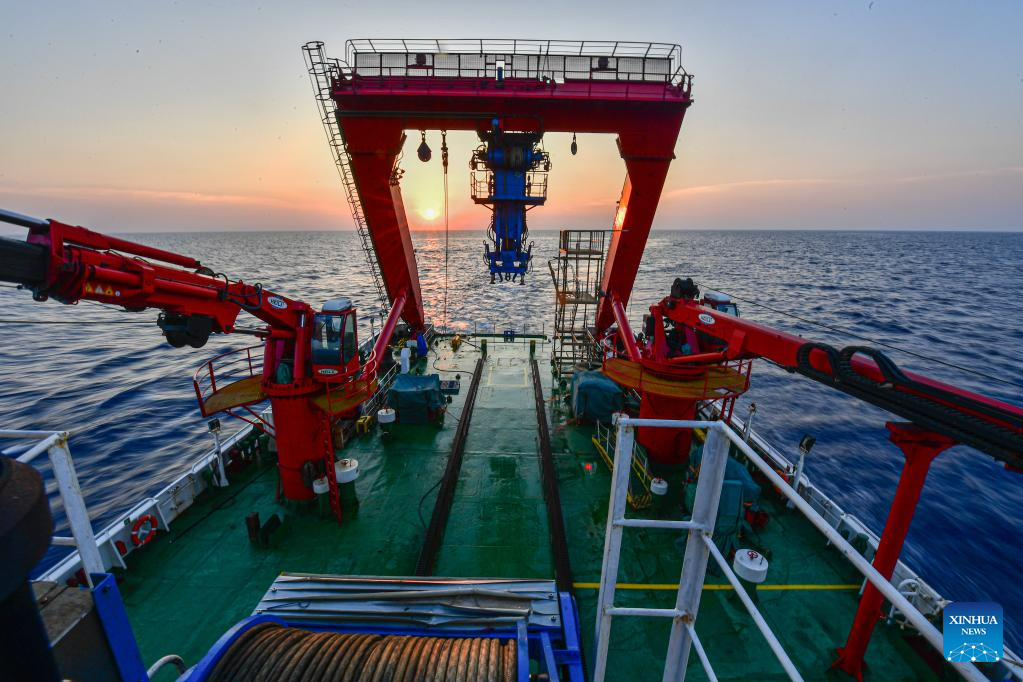
China's scientific research ship Tansuo-1 sails near the site of the No. 1 and No. 2 shipwrecks near the northwest continental slope of the South China Sea, May 24, 2023. (Xinhua/Pu Xiaoxu)
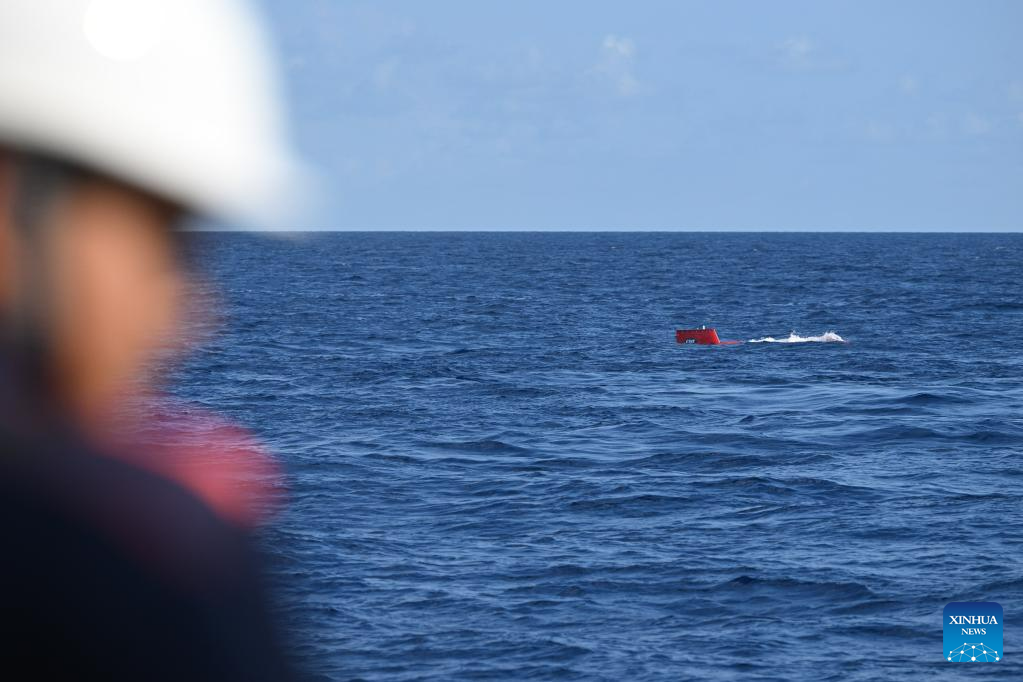
The crewed submersible Shenhai Yongshi (Deep Sea Warrior) prepares to submerge into the sea before conducting underwater investigation in the South China Sea, May 27, 2023. (Xinhua/Pu Xiaoxu)
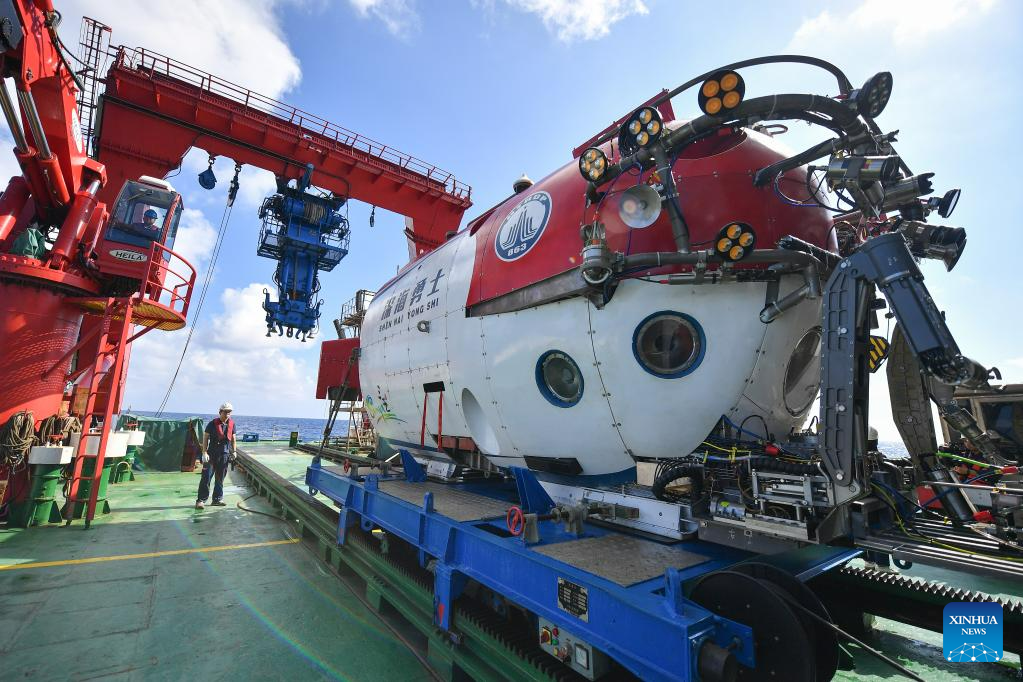
This photo taken on May 26, 2023 shows the crewed submersible Shenhai Yongshi (Deep Sea Warrior), which is used for collecting underwater archaeological data, aboard the scientific research ship Tansuo-1 in the South China Sea. (Xinhua/Pu Xiaoxu)
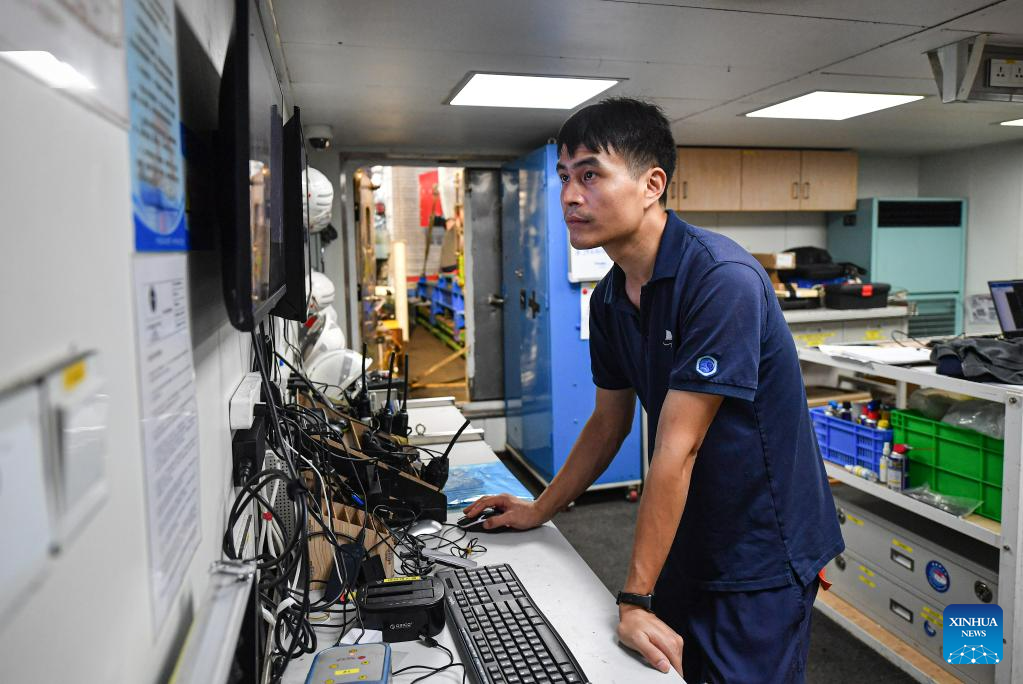
A hydronaut works on the archaeological data collected underwater at the scientific research ship Tansuo-1 in the South China Sea, May 25, 2023. (Xinhua/Pu Xiaoxu)
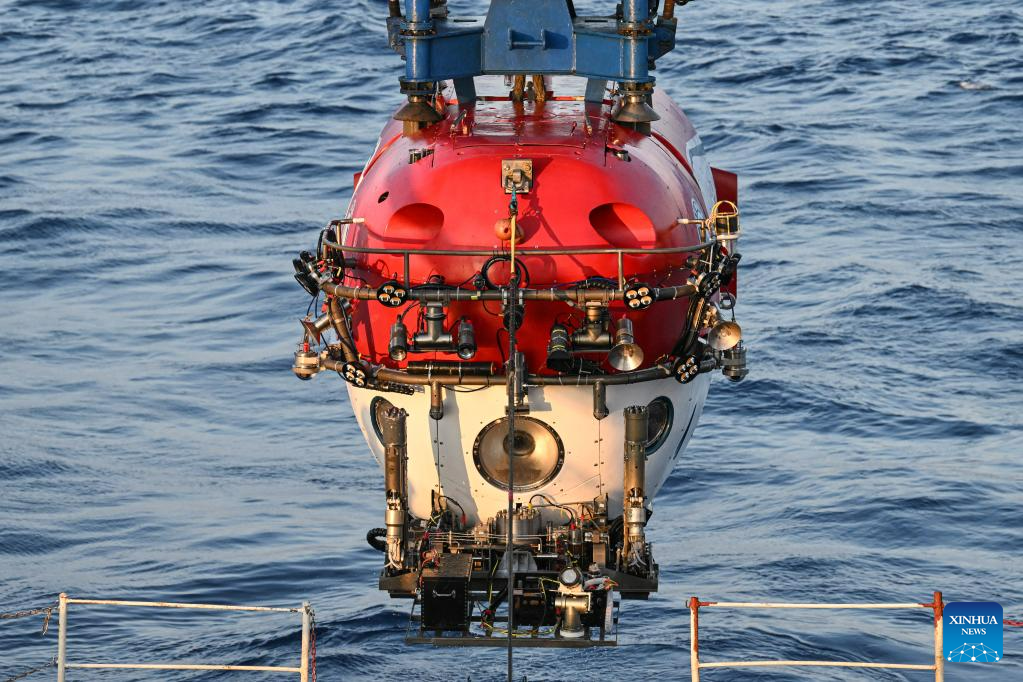
The crewed submersible Shenhai Yongshi (Deep Sea Warrior) is released from the scientific research ship Tansuo-1 and prepares to submerge into the sea for conducting underwater investigation in the South China Sea, May 24, 2023. (Xinhua/Pu Xiaoxu)
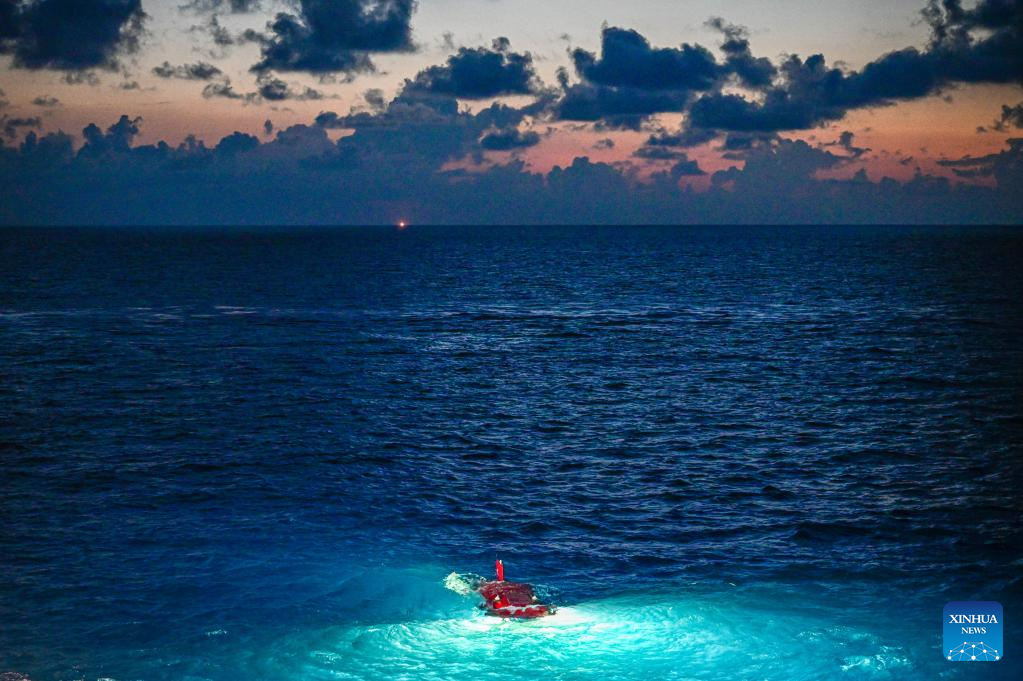
The crewed submersible Shenhai Yongshi (Deep Sea Warrior) resurfaces after completing a day's underwater investigation in the South China Sea, May 27, 2023. (Xinhua/Pu Xiaoxu)
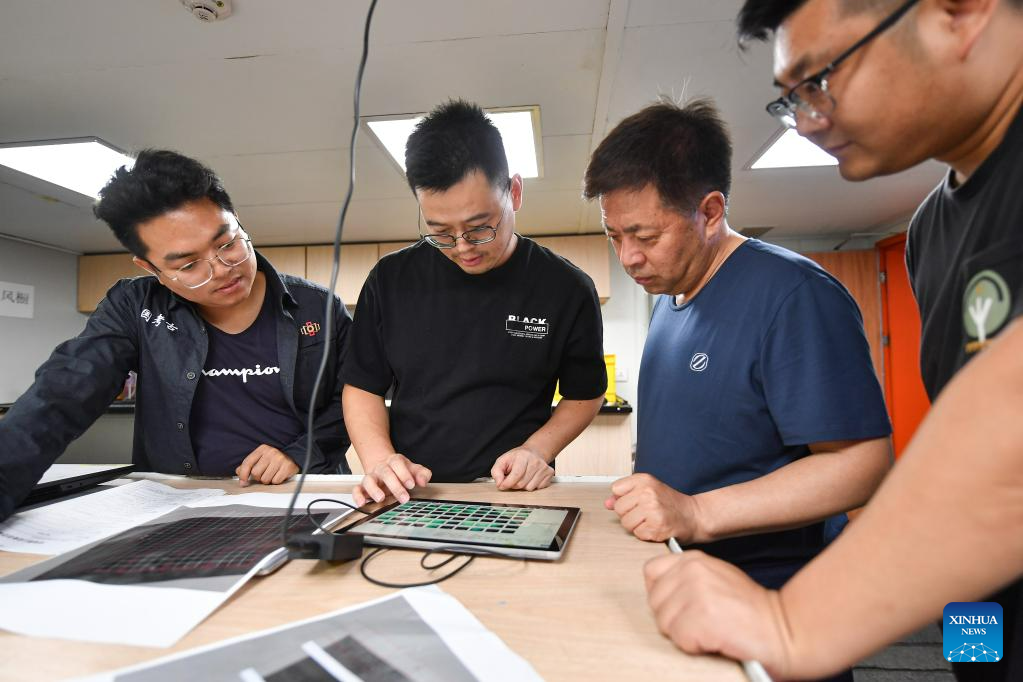
Archaeologists work on the archaeological data collected underwater at the scientific research ship Tansuo-1 in the South China Sea, May 24, 2023. (Xinhua/Pu Xiaoxu)
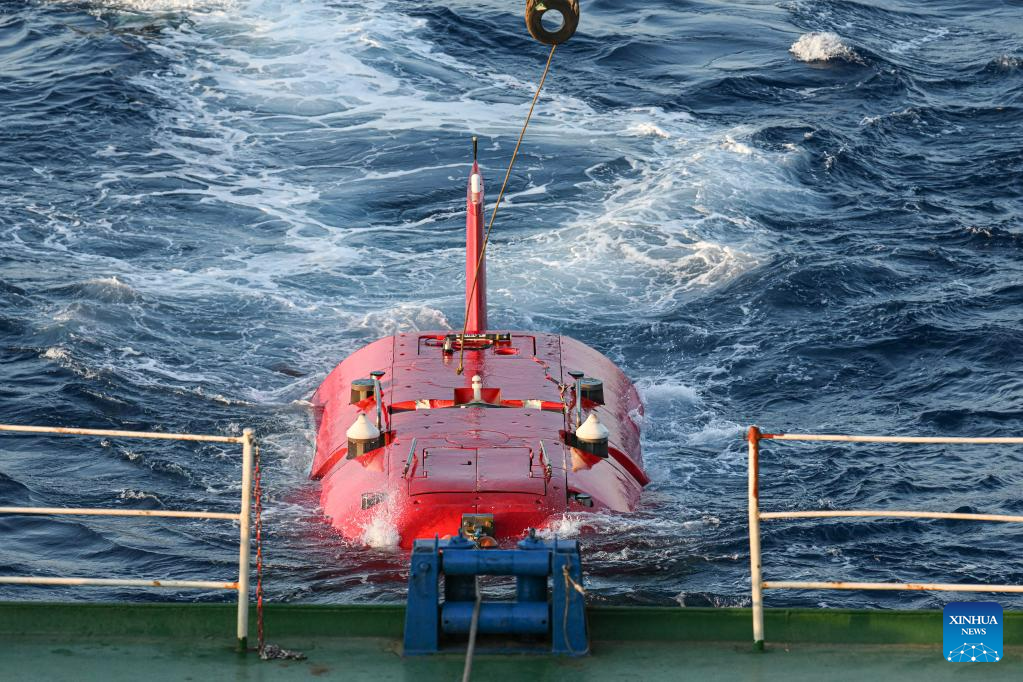
The crewed submersible Shenhai Yongshi (Deep Sea Warrior) is released from the scientific research ship Tansuo-1 and prepares to submerge into the sea for conducting underwater investigation in the South China Sea, May 24, 2023. (Xinhua/Pu Xiaoxu)



